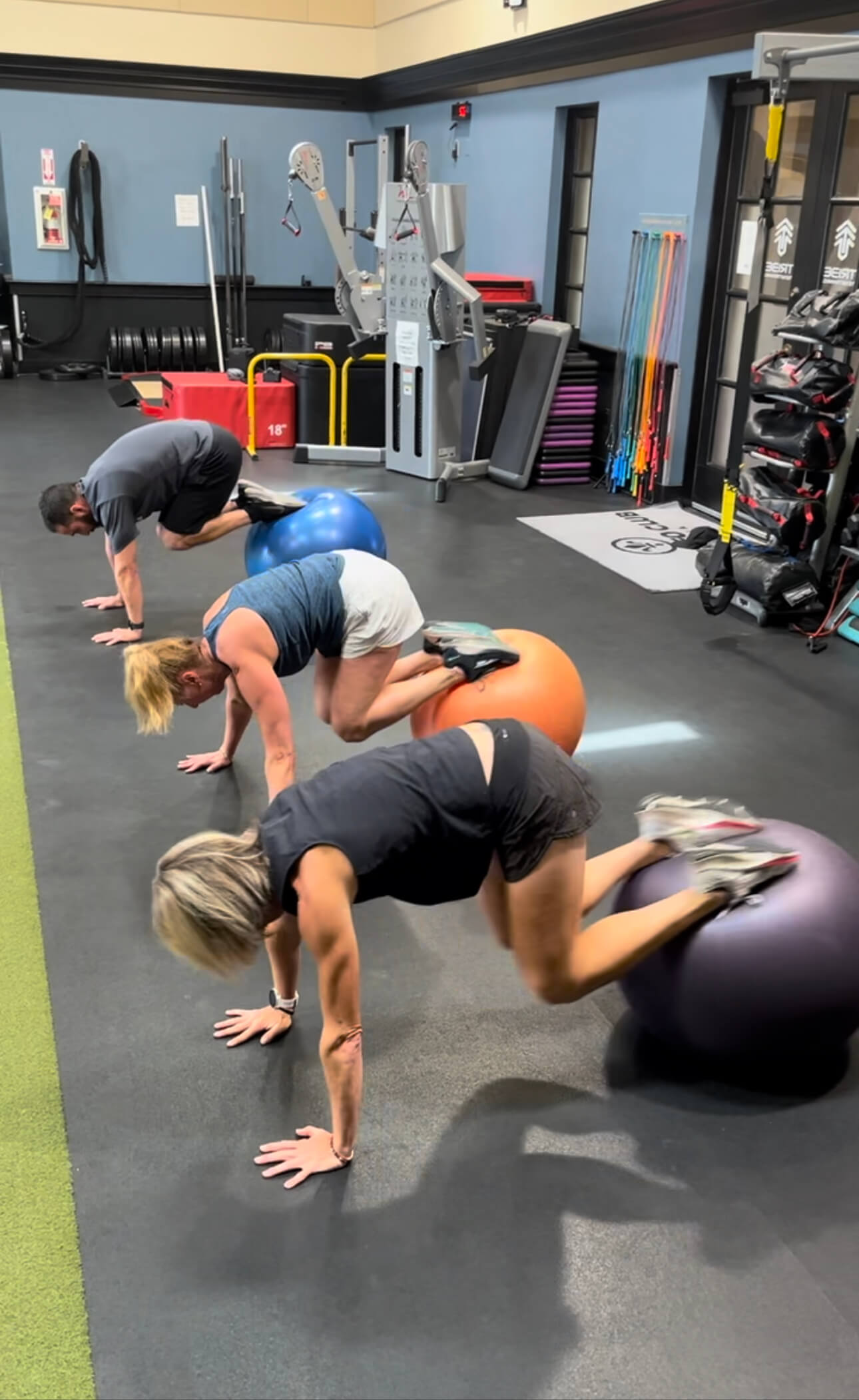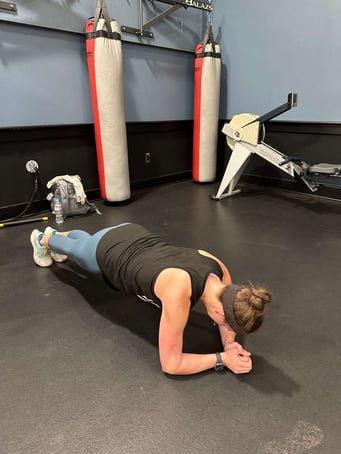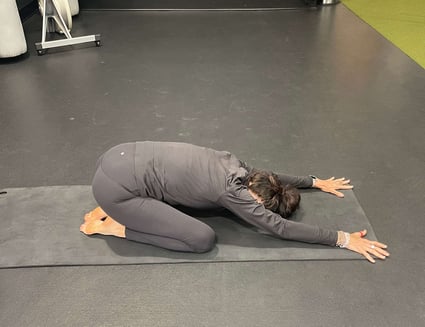
Whether you are training for a competition or are just training to be your best self, recovery is a critical part of your athletic performance.
Without adequate and proper recovery, you risk reduced muscle strength and endurance, potentially increasing the chance of injury.
The problem is that most people do not know how to recover properly, and some people do not care to recover at all.
The Paseo Club is a social club in the Santa Clarita Valley that has supported members in fitness for almost twenty years. We want all athletes to enjoy being physically active as possible, with minimal time nursing injuries on the sidelines.
In this article, we will address why recovery is important, how recovery impacts injury prevention, and what steps the pros take to recover after their workouts.
.jpg?width=350&height=440&name=comp_%20(1).jpg) What does recovery mean?
What does recovery mean?
Recovery is the process of the muscles repairing themselves and receiving nutrients after a person exercises. There are several recovery techniques for athletes designed to minimize the downtime required. This means you have more time to hone your skill in your workout or sport.
Why is recovery essential?
A recovery program is essential for a variety of reasons.
Repair muscle
Exercise stresses the body. Muscle tissue is damaged, and the body needs time to heal these micro tears and build muscle.
%20(1).jpg?width=425&height=289&name=comp_TOR04876_2K!%20(1)%20(1).jpg) Regulate cortisol levels
Regulate cortisol levels
When you overexert in exercise, it affects cortisol levels in your body. High cortisol levels make you gain weight, lose sleep, and are irritable.
Mentally de-stress
Pushing for PRs every week takes a toll on your body and your mind. Taking time to recover can help alleviate the expectation to always make progress. Many of the best athletes integrate lower-intensity workouts with higher-intensity ones to avoid burnout.
Prevents Injuries
Constant exertion puts immense strain on the body. This is especially true if your sport of choice focuses on just certain areas of the body, such as tennis, biking, or running. Without a proper recovery program, repetitive stress can cause injuries, preventing you from engaging in your favorite activity.
.png?width=425&height=290&name=crop_comp_IMG-2720%20-%20Edited%20(1).png) How to recover like a pro after exercising
How to recover like a pro after exercising
The proper care of your muscle and connective tissue, consuming healthy food, getting good sleep, and, believe it or not, the types of clothes you wear can all promote the post-workout recovery necessary to help you maximize the results from your time spent sweating.
1. Sleep
Sleep is probably one of the most critical components of a total wellness program that can help improve your overall health and fitness levels. Your body produces most of the hormones needed for tissue repair during the deep REM cycles of sleep. If you are planning a high-intensity workout, you must have the ability to get a full night's sleep to allow the endocrine system, which produces hormones, to play its role in the recovery process.
2. Myofascial Release
Foam rollers, compressions balls, and rolling-pin sticks all help reduce muscle tightness — at least one should be a part of your regular recovery program. Collagen can bind between layers of muscle and create adhesions or knots if muscles don’t cool down properly or are held in a shortened position for an extended period.
Traditional massage therapy works by manually manipulating muscle tissue to break up these adhesions, allowing the layers of muscle to slide against one another without restrictions and enhancing the range of mobility.
But since it is impossible to hire a massage therapist to work on your after every workout, foam rollers, rolling sticks, or compression balls need to be used to apply the necessary pressure to break up collagen and promote optimal muscle recovery.
.jpg?width=341&height=425&name=compressed_pexels-lisa-fotios-12731892-min%20(2).jpg) 3. Post-workout nutrition
3. Post-workout nutrition
During exercise, your muscles expend energy and experience physical stress.
Recent research in nutrient timing suggests that when nutrition is consumed relative to exercise may be as important as what is consumed. The body needs to replenish energy with carbohydrates and repair tissue with protein after exercising.
A post-workout snack or drink with the proper ratio of carbohydrates-to-protein can help with both needs. The carbohydrates refuel energy needs and increase insulin levels, which helps to promote the post-exercise utilization of protein for muscle repair.
Proper nutrition is especially important after high-intensity exercise, which can promote the release of the muscle-building hormones: testosterone (T), human growth hormone (GH), and insulin-like growth factor-1 (IGF-1).
Evidence indicates that having a snack or drink with a 3 to 4:1 carbohydrate-to-protein ratio within 30-45 minutes post-exercise can help you recover from activity and prepare for tomorrow’s workout. Some examples of snacks are:
- 10 baby carrots and four tablespoons hummus
- 30 grams of nuts and 1 date or 4 dried apricots
- 1 medium banana with 1 tablespoon of peanut or almond butter
- ½ cup of kidney or black beans with 1 tablespoon of barbeque sauce
- 1 medium-sized apple with 1 tablespoon of peanut butter or 25 grams of nuts
- 1 ¼ cups of Greek yogurt with ½ cup of blueberries, 1 banana, and 4 teaspoons of honey
4. Ice baths or cryotherapy
Use cold treatments for an uncomfortable but extremely effective option for recovery.
Cold treatment can help cool down the core temperature — essential when exercising in hot weather. It can also reduce inflammation and promote healing in tissue. Ice applied to a sore muscle or joint brings more blood to the area, supplying nutrients and oxygen to help promote healing.
Ice baths, ice packs, cooling vests, or cryogenic chambers are all options for cold treatment.
A cryotherapy chamber applies a really cold temperature, up to negative 135 degrees centigrade, for a brief amount of time, and can be an effective way to promote post-exercise recovery. Cryotherapy clinics are popping up all over, providing an affordable way to obtain the benefits of cold temperatures.
 5. Compression clothing
5. Compression clothing
Athletes often wear compression clothing for recovery. This includes compression socks, leggings, and sleeves. These garments are designed to fit tightly around the muscles, exerting pressure to improve circulation and increase blood flow to the affected area. This, in turn, helps to reduce inflammation and swelling and may help to alleviate muscle soreness and fatigue after exercise.
Compression clothing is made from stretchy, breathable materials such as spandex or nylon. Some may also incorporate other features, such as moisture-wicking to keep your skin dry and cool during exercise. It is important to note that while compression clothing may be helpful for some athletes in aiding recovery, it is not a substitute for proper rest, hydration, and nutrition.
6. Sauna or hot tub
The heat from a sauna or hot tub increases circulation, which removes metabolic waste products like hydrogen ions. The heat also carries oxygen and other nutrients necessary to help repair tissue used during the workout. Plus, it feels great and releases endorphins, aiding in relaxation and well-being.
7. Vibration Training
You may have walked by a vibration training platform like the Power Plate and wondered what it was and why you should use it.
A tremendous amount of research demonstrates the effectiveness of using a vibration platform. A vibration platform oscillates at 25 to 50 Hz per second at an amplitude of 2 to 4 mm, creating an upward force into the body's tissues.
As the platform vibrates, it triggers the nervous system to generate 30 to 40 micro-muscle contractions per second. The vibrating motion enhances blood flow to any part of the body placed on the platform.
This three-dimensional, high-speed movement can improve the viscosity of the fascia and connective tissue that surrounds muscle fibers. The vibrations of the platform can help flush metabolic waste from the muscles, potentially enhancing recovery time.
 Starting your recovery program
Starting your recovery program
Overtraining provides sub-optimal muscle protein synthesis and could lead to an accumulation of energy-producing hormones such as epinephrine and cortisol, reducing the ability to generate new muscle tissue.
It can also lead to injury or illness, both of which could keep you out of the gym for lengthy periods.
Additional symptoms of overtraining are loss of sleep, loss of appetite, lingering illness, and cessation of gains from exercise — all of which significantly affect your ability to achieve your fitness goals.
If you have a busy period of work, travel, or family obligations, adjust your exercise program accordingly and do low-to-moderate-intensity workouts until you can return to your normal sleep patterns and healthy eating.
The Paseo Club is a home away from home for our members and their families. From babies to seniors, we have the facilities and the instructors to help you train your best. Choose from over 60 fitness classes each week, pickleball or tennis, and a junior Olympic pool.
To see the club in person, sign up for a tour. Learn more about the Paseo Club and fitness by reading these three articles.
- The benefits of cross-training (prevent injuries and end monotony)
- Why training harder may not make you faster (A new approach to running)
- The 9 benefits of personal training (and how it helps you to achieve your fitness goals)
Jen Azevedo is a tennis professional, pickleball professional, personal trainer, group exercise instructor, and the general manager of the Paseo Club. She loves the community at the Paseo Club and that it is also a safe and fun place for her daughter. Jen’s favorite activities are joining her tribe for trail races or her partners for tennis matches. Occasionally Jen slows down to relax with a book — she reads over 100 a year!


